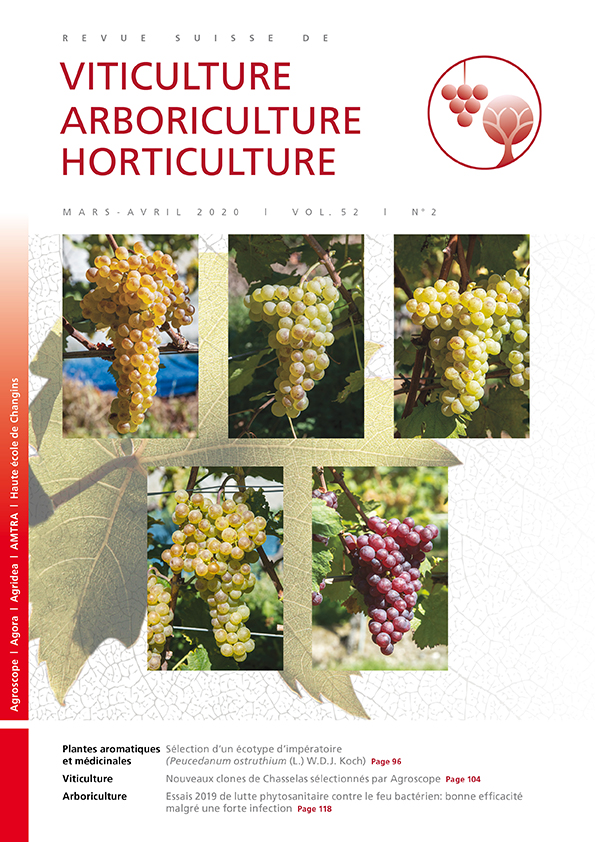
Issue 2 - March - April 2020

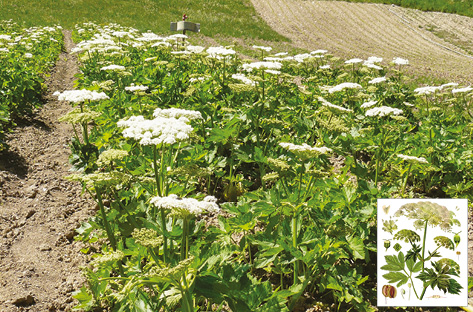
Abstract in open access
With the aim to provide pharmaceutical, cosmetics and food industries with wellcharacterized
plant material, a comparative study of twelve ecotypes of Peucedanum ostruthium originating from the Swiss Alps was performed. Phenotypic variability of the ecotypes, dry matter, productivity of above-ground and underground parts, as well as essential oil and ostruthin content were evaluated. The influence of harvest in spring and autumn was also considered. On one hand, harvest in spring was favorable to dry matter yield (668 g / m2) and essential oil content (0,31%, 2,03 ml / m2) obtained from aerial parts. On the other hand, harvest in autumn was beneficial on biomass (1150 g / m2) and essential oil content (4,56 ml / m2) of roots and rhizomes, despite lower essential oil content in October (0,39%) compared to May (0,63%). Interestingly, ostruthin was only detected in underground parts. Phenotypic and phytochemical variability of wild ecotypes was significant for all measured parameters. Results of this study led to the selection of a vigorous ecotype, productive in both aboveground and underground parts, and rich in ostruthin.
Conservation of this ecotype and seed production is guaranteed to meet market needs and to promote the cultivation of Peucedanum ostruthium in the future.
Keywords: Key words: Peucedanum ostruthium, yield, essential oil, ostruthin.
E-Mail: claude-alain.carron@agroscope.admin.ch
Adress: Agroscope, 1964 Conthey
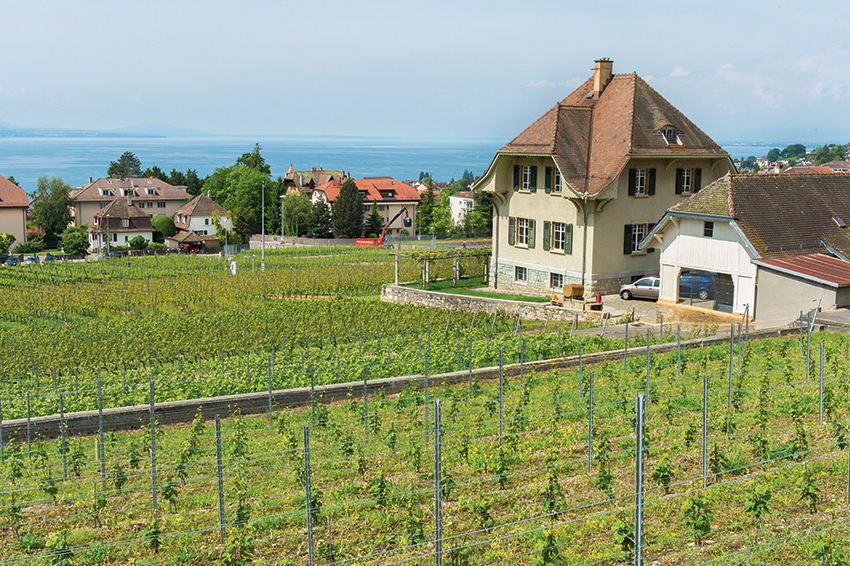
Abstract in open access
New Chasselas clones bred by Agroscope. The preservation of the clonalbiodiversity of the Chasselas grape variety and its clonal breeding was initiated in 1923 at the Agroscope research station. Starting with the Pully collection, and based on observations conducted from 2012 to 2016, a study collection has allowed the breeding of five new Chasselas clones that will be disseminated within the scope of the Swiss certification under the approval Numbers RAC 72, RAC 73, RAC 74, RAC 75 and RAC 76. Of high quality at the organoleptic level, they have interesting and diversified agronomic characteristics, and judiciously round out the current range of certified Swiss clones on offer.
Keywords: grapevine, Chasselas, clonal selection, wine quality.
E-Mail: jean-laurent.spring@agroscope.admin.ch
Adress: Agroscope, 1009 Pully
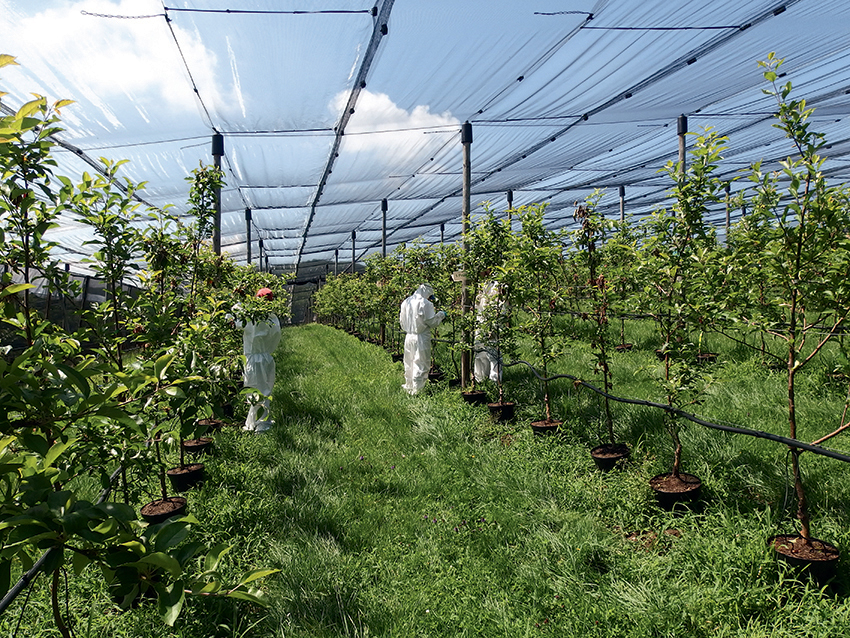
Abstract in open access
At the time when the 2019 plant protection trials for controlling fire blight were being conducted by Agroscope at the Stone Fruit Centre Breitenhof (canton of Basel-Landschaft), 40% of the flower buds of the untreated trees displayed symptoms. Despite this heavy pressure, high levels of efficacy (from 50 to 71%, depending on the approach) were achieved thanks to the plant-protection strategies applied. Treating the trees at the rate of one application every two day achieved a good result by properly covering the entire flowering period. Although in the first series the number of treatments was cut back to two owing to the weather – as opposed to the three treatments in the second round – the effect of the applications was no less. This confirms that there is not an ideal number of applications for effective protection, but that treatment must be adapted to the existing infection risk. The different programmes applied do not differ from one another in terms of efficacy, but rather in terms of cost. This difference is a function of the price of the products used. The results of the 2019 trials therefore offer a decisionmaking basis for the growers based on the efficacy and cost of the different programmes.
Keywords: fire blight, plant-protection strategies, infection flower buds, efficacy and cost
E-Mail: perrine.gravalon@agroscope.admin.ch
Adress: Agroscope, 8820 Wädenswil
Abstract in open access
En Suisse, deux substances actives sont à disposition pour l’éclaircissage des poiriers: la 6-benzyladénine du produit MaxCel et le métamitrone du produit Brevis. Leur efficacité est toutefois moins fiable que pour les pommiers, et les températures lors de l’application sont déterminantes. Néanmoins, ces produits seraient intéressants afin de réduire le temps nécessaire à l’éclaircissage manuel et d’augmenter la qualité du fruit.
Keywords:
E-Mail: thomas.kuster@agroscope.admin.ch
Adress: Agroscope, 8820 Wädenswil
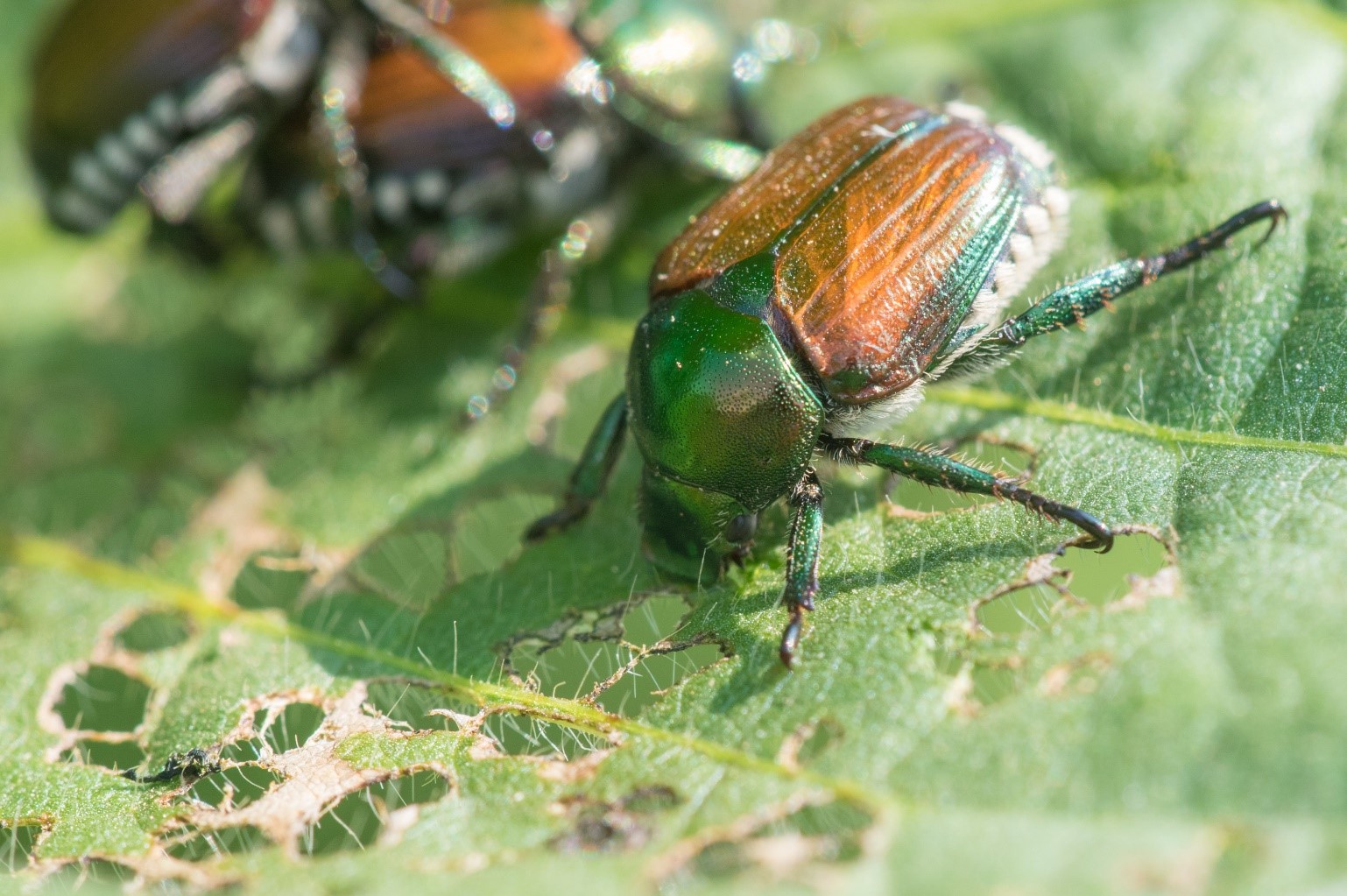
Abstract in open access
Le scarabée japonais, un ravageur envahissant, a atteint la Suisse. Dans la zone contaminée du nord de l’Italie, il cause depuis plusieurs années des dommages considérables dans les vignobles ainsi que dans les cultures fruitières, de petits fruits et de soja. Le groupe de recherche Protection phytosanitaire écologique dans les grandes cultures d’Agroscope, fort de son expérience avec les insectes indigènes apparentés au scarabée japonais, travaille sur une stratégie de lutte durable. Celle-ci consiste à utiliser des champignons entomopathogènes contre ce coléoptère vorace et ses larves.
Keywords:
E-Mail: tanja.sostizzo@agroscope.admin.ch
Adress: Agroscope, 8820 Wädenswil
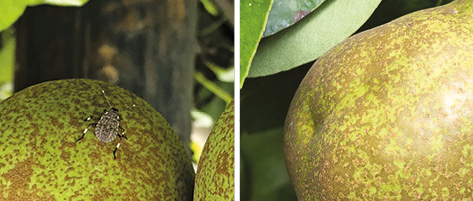
Abstract in open access
On manque à ce jour d’expériences sur le long terme dans la régulation de la punaise marbrée en Suisse. Les recherches dans le domaine battent leur plein. Trois substances actives sont disponibles en 2020 pour lutter contre ce ravageur.
Keywords:
E-Mail: barbara.egger@agroscope.admin.ch
Adress: Agroscope, 8820 Wädenswil

 Download of full issue
Download of full issue
 Download article
Download article